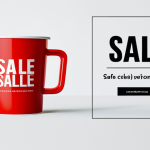Remember when landing an advertising design job felt like it was purely about having an immaculate portfolio and a sharp eye? Well, let me tell you, as someone who’s navigated this industry for years, the game has shifted dramatically.
In today’s dynamic, fast-evolving creative landscape, especially with AI tools now automating many routine tasks, true success isn’t just about your craft anymore.
I’ve personally witnessed incredibly talented designers struggle because they underestimated the power of authentic connections. It’s not about transactional networking; it’s about building a robust web of genuine relationships that genuinely elevate your opportunities and keep you ahead of emerging trends like personalized, data-driven ad campaigns.
How do you truly cut through the noise and make those impactful connections in a world that often feels digitally isolating yet hyper-competitive? Let’s figure it out precisely.
Remember when landing an advertising design job felt like it was purely about having an immaculate portfolio and a sharp eye? Well, let me tell you, as someone who’s navigated this industry for years, the game has shifted dramatically.
In today’s dynamic, fast-evolving creative landscape, especially with AI tools now automating many routine tasks, true success isn’t just about your craft anymore.
I’ve personally witnessed incredibly talented designers struggle because they underestimated the power of authentic connections. It’s not about transactional networking; it’s about building a robust web of genuine relationships that genuinely elevate your opportunities and keep you ahead of emerging trends like personalized, data-driven ad campaigns.
How do you truly cut through the noise and make those impactful connections in a world that often feels digitally isolating yet hyper-competitive? Let’s figure it out precisely.
Beyond the Portfolio: Cultivating Authentic Connections

1. The Shift from Showcase to Storytelling
It used to be that your portfolio was your entire identity, a static monument to your skills. But in my experience, employers and collaborators today want more than just a slick presentation; they want to see the person behind the pixels.
They want to understand your thought process, your problem-solving approach, and, crucially, your passion. This isn’t just about showing off your best work, but about narrating the journey of each project, including the challenges you faced and how you overcame them.
When I started in this field, I spent countless hours perfecting my mock-ups, only to realize later that the most impactful conversations happened when I shared the *story* of a particular campaign, perhaps one where a client was hesitant about a bold creative direction, and how I built trust and demonstrated the value, leading to a successful launch.
It’s about demonstrating your resilience and collaborative spirit, not just your artistic flair. This human element, this willingness to be vulnerable and share your process, builds far deeper connections than any perfect Dribbble shot ever could.
2. Networking with Purpose, Not Pressure
Let’s be honest, the word “networking” can feel like a chore, conjuring images of awkward cocktail parties and forced conversations. But it doesn’t have to be.
From what I’ve seen, the most effective networking happens when it feels less like a transaction and more like a genuine curiosity about another person’s journey.
Instead of going into an event with a rigid agenda to hand out X number of business cards, try to approach it with an open mind and a desire to learn.
Ask thoughtful questions, listen actively, and explore common interests beyond just the advertising world. I remember once attending a design conference and feeling completely overwhelmed by the sheer number of people.
Instead of trying to talk to everyone, I focused on finding a quiet corner where a small group was discussing sustainable design. I joined in, shared a few thoughts from my own experience with eco-conscious branding, and ended up having a fascinating conversation with someone who later became a key contact for a major B-Corp client.
It wasn’t about selling myself; it was about connecting over shared values and passions.
Leveraging Digital Spaces for Real-World Impact
1. Beyond Likes: Engaging on Professional Platforms
We’re all on LinkedIn, Behance, and Instagram, but are we truly *engaging* or just passively scrolling and posting? My own experience has shown me that simply having a profile isn’t enough; it’s about actively participating in conversations, offering valuable insights, and building a reputation as a thoughtful contributor.
Instead of just “liking” a post, take the time to leave a meaningful comment that adds to the discussion. Share articles that resonate with you and explain why.
If you see a designer you admire, send a personalized message referencing a specific piece of their work that impressed you, rather than a generic connection request.
This shows you’ve done your homework and genuinely appreciate their craft. I’ve often found that these small, consistent acts of engagement can lead to incredibly valuable opportunities.
It’s like planting seeds; you might not see immediate results, but over time, these connections can blossom into unexpected collaborations and job leads.
It truly shows your dedication and the depth of your understanding of the industry.
2. Crafting a Magnetic Online Presence
Your online presence isn’t just your portfolio; it’s the entire narrative you weave across all digital touchpoints. This means everything from your personal website to your professional social media profiles needs to tell a cohesive, compelling story about who you are as a designer and what unique value you bring.
Think about it: when someone clicks on your profile, what’s the immediate impression they get? Is it clear, professional, and indicative of your specific skills and niche?
I’ve seen many incredibly talented designers inadvertently shoot themselves in the foot with inconsistent branding or outdated information across their various platforms.
It’s not about being perfect, but about being intentional. For instance, I recently revamped my own online persona to highlight my specialization in immersive brand experiences, ensuring every piece of content, every project description, and even my profile picture aligned with this core message.
The result? More targeted inquiries and conversations with potential clients who were genuinely seeking that specific expertise. Your digital footprint is your 24/7 advocate; make sure it’s speaking volumes about your unique strengths.
The Art of Follow-Through: Nurturing Relationships
1. Beyond the Initial Handshake: Consistent Engagement
The biggest mistake I’ve seen designers make is treating networking as a one-time event. You meet someone, exchange cards, and then… crickets. In today’s competitive landscape, that’s simply not enough.
The real magic happens in the follow-through, the consistent and thoughtful nurturing of those initial connections. This doesn’t mean bombarding people with emails or incessant calls.
It means finding authentic ways to stay on their radar. Maybe it’s sending an article you know they’d find interesting, or reaching out to congratulate them on a recent project you saw.
Perhaps it’s simply a quick, genuine message to say “It was great meeting you at [event/webinar], I really enjoyed our conversation about [topic].” I always keep a small, personal CRM – even just a spreadsheet – where I note down a few key details about each person I connect with, like their interests or recent projects.
This allows me to personalize future outreach and make it feel less transactional and more like a continuation of a genuine conversation. This small effort vastly increases the likelihood of those connections turning into real opportunities down the line.
2. Offering Value Before Asking for Anything
This is perhaps the most critical component of building a robust professional network: the principle of reciprocity. Instead of constantly thinking “What can this person do for me?”, shift your mindset to “What value can I offer them?” This could be as simple as introducing two people in your network who you think would benefit from knowing each other, sharing useful resources, or even offering a brief, pro-bono brainstorming session if you see a challenge they’re facing that aligns with your expertise.
I remember a time early in my career when I was struggling to break into a new niche. Instead of cold-emailing for jobs, I started offering free design critiques to startups in that space, simply because I was passionate about it.
One of those critiques led to a small project, which then opened the door to a much larger opportunity. It wasn’t about the immediate gain; it was about demonstrating my expertise and genuine helpfulness.
People remember those who go out of their way to provide value, and these acts of generosity often come back to you tenfold in unexpected ways.
Your Network as a Compass: Navigating Industry Shifts
1. Spotting Trends Through Collective Intelligence
The advertising and design world moves at warp speed. What’s hot today might be old news tomorrow. Keeping up with every new tool, every emerging platform, and every shifting consumer behavior can feel like a full-time job in itself.
This is where your network becomes an invaluable asset – a collective intelligence hub. I’ve found that some of the most critical insights I’ve gained haven’t come from industry reports, but from casual conversations with peers at various companies.
Someone might mention a new AI-driven creative tool they’re experimenting with, or a unique approach to measuring campaign ROI that their agency is pioneering.
These are the kinds of real-world, actionable insights you won’t find on the front page of every industry blog. For instance, I was hesitant about the rise of interactive AR advertising until a friend, a senior creative director at a major agency, shared some impressive internal data from their recent AR campaigns.
It completely shifted my perspective and prompted me to dive deeper into that technology. Your network acts as your early warning system, helping you spot the next big thing before it becomes mainstream and giving you a significant edge in a competitive market.
2. Adapting and Growing Through Shared Experience
Beyond just spotting trends, your network offers a vital space for shared learning and mutual support. When you’re facing a particularly tricky client brief, or grappling with a new software, or even just feeling the inevitable burnout that sometimes comes with creative work, having a trusted circle of peers to bounce ideas off, seek advice from, or simply commiserate with, is invaluable.
I’ve personally leaned on my network countless times – whether it was getting feedback on a campaign strategy before presenting it, or understanding the nuances of navigating a difficult negotiation.
We’re often too focused on presenting a perfect, polished image, but true growth comes from admitting what you don’t know and learning from others. There’s a particular comfort and confidence that comes from knowing you’re not alone in the challenges you face, and that there’s a community of experienced professionals who are willing to share their wisdom.
This collaborative spirit, born from genuine connection, fosters a cycle of continuous improvement that solo efforts simply cannot replicate.
| Networking Strategy | Traditional Approach | Effective Modern Approach |
|---|---|---|
| Goal Orientation | Find a job/client immediately. | Build long-term relationships, share value. |
| Interaction Style | One-time information exchange (business cards). | Consistent, thoughtful engagement and follow-up. |
| Digital Presence | Static portfolio, basic profiles. | Active engagement, consistent personal brand narrative across platforms. |
| Value Proposition | Focus on what you need. | Focus on what value you can offer others first. |
| Information Flow | Seeking job postings, industry news. | Tapping into collective intelligence, peer insights. |
Cultivating Long-Term Relationships: The True ROI of Connections
1. From Contacts to Collaborators and Champions
The journey from a casual contact to a trusted collaborator, or even a champion who advocates for you, is a slow burn, but it’s where the true return on your networking investment lies.
It’s about moving beyond surface-level acquaintance to building a rapport that withstands the test of time and changes in the industry. I’ve seen this firsthand; some of my most impactful opportunities didn’t come from direct job applications but from referrals by former colleagues or industry peers who knew my work ethic and trusted my capabilities.
These are the people who will send opportunities your way when they come across them, or put in a good word for you when a key role opens up. They become your informal sales team, your cheerleaders, and your confidantes.
This level of trust and advocacy doesn’t happen overnight. It’s built through consistent professionalism, reliability, and genuine human connection. It’s about showing up, delivering quality work, and being a good person to work with, not just a talented designer.
2. The Ripple Effect: Beyond Your Immediate Circle
One of the most fascinating aspects of a strong network is its ripple effect. A connection you make today might not directly lead to a job, but that person might introduce you to someone else, who then connects you with an entirely new opportunity you would never have found on your own.
It’s a testament to the power of six degrees of separation. I’ve found myself in rooms I never thought I’d be in, simply because one connection opened a door to another, and another.
For instance, a casual coffee chat with a former design school classmate led to an introduction to a marketing director at a tech startup, which then spiraled into a consulting gig with a venture capital firm looking to launch new brands.
None of this was planned; it was the organic outcome of nurturing a wide and varied network. These indirect pathways often lead to the most exciting and unexpected opportunities, pushing you beyond your comfort zone and into new realms of creative challenge.
This is the real, lasting value of genuine human connection in a world that often feels dominated by algorithms.
Wrapping Up
It’s easy to get caught up in the technical aspects of advertising design – the software, the algorithms, the latest trends. But as I’ve learned over a career full of evolving challenges and unexpected breakthroughs, the human element remains the most powerful force.
Building a truly robust network isn’t just a strategy for career advancement; it’s a way to enrich your professional life, find genuine support, and continually push the boundaries of what’s possible.
So, step away from the screen for a moment, look up, and start investing in the most valuable asset you have: your connections. They are, without a doubt, the true compass guiding you through this exhilarating journey.
Useful Information
1. Join Professional Organizations: Actively participate in groups like AIGA (American Institute of Graphic Arts) or The One Club for Creativity. These organizations often host workshops, webinars, and networking events tailored to designers and advertisers, providing direct access to industry leaders and peers.
2. Attend Industry Conferences (Virtually or In-Person):
Events like SXSW Interactive, Advertising Week, or local design festivals are goldmines for learning new trends and making connections. Don’t just attend; prepare thoughtful questions and actively engage in Q&A sessions or breakout rooms.
3. Master the Art of the Informational Interview: Reach out to designers or creative directors you admire for a brief 15-20 minute chat about their career path. Frame it as a learning opportunity, not a job hunt, and always follow up with a thank-you note.
4. Curate Your Online Presence Intentionally: Beyond just a portfolio, ensure your LinkedIn profile, personal website, and even your “about me” sections on platforms like Behance tell a consistent, compelling story about your unique skills and passion. Treat every digital touchpoint as part of your personal brand.
5. Start a Side Project or Collaborate: Working on personal projects or collaborating with peers on a passion project is a fantastic way to meet new people, showcase diverse skills, and build relationships organically, often leading to unexpected opportunities and stronger portfolio pieces.
Key Takeaways
Beyond the Portfolio: Success in advertising design now hinges on authentic human connections and storytelling, not just technical skills. Purposeful Networking: Treat networking as building genuine relationships, focusing on shared values and learning, rather than transactional exchanges.
Engage Digitally: Leverage professional platforms for active engagement and building a consistent, magnetic online presence, not just passive consumption.
Nurture Relationships: Consistent follow-through and offering value before asking are crucial for converting initial contacts into long-term collaborators and advocates.
Network as a Resource: Your professional network is a vital source for spotting industry trends, gaining collective intelligence, and finding mutual support for continuous growth.
Frequently Asked Questions (FAQ) 📖
Q: In a world that feels “digitally isolating yet hyper-competitive,” how do you genuinely start building these crucial relationships when you’re not an established name?
A: Look, it’s easy to feel lost in the digital static, right? My advice, and I’ve seen this work for countless people just starting out, is to start small and be incredibly intentional.
Don’t chase a thousand connections; focus on finding a few genuine common interests with someone. Attend local industry meetups, not just the big, intimidating conferences.
I remember going to a small design happy hour a few years back – almost didn’t go, felt a bit tired – and ended up having a twenty-minute chat with someone about our shared love for obscure 80s movie posters.
Turns out, she was a senior creative director at an agency I admired. That organic conversation, totally unrelated to work at first, built a foundation.
Follow up with a simple, personal note – “Enjoyed our chat about X.” People remember authenticity. It’s about showing up as yourself, not just a resume, and listening more than you talk.
Think quality over quantity every single time.
Q: You mentioned it’s not “transactional networking.” So, what does a genuine relationship in this industry look like, and how does it actually translate into a tangible leg up in opportunities?
A: That’s the million-dollar question, isn’t it? It’s absolutely not about handing out business cards like candy and expecting a job offer. A genuine relationship is built on mutual respect and value.
It might be a mentor who sees potential in you and offers tough, honest feedback on your portfolio, something you’d never get from a generic online critique.
Or it could be a peer you regularly bounce ideas off of, someone who truly understands the daily grind. I once shared a ridiculously frustrating client challenge with a friend from a different agency over coffee – just venting, really.
He listened, offered a completely fresh perspective, and honestly, that conversation saved the project. A few months later, his agency had a specific project that needed a unique skill set, and because he knew my work ethic and how I think, he immediately thought of me.
These connections give you an informal “insider track” to unadvertised opportunities, collaborative projects, or even just critical insights into where the industry is heading.
It’s about trust, shared learning, and sometimes, just plain old empathy.
Q: With
A: I automating so many routine design tasks, how do these “genuine relationships” help me stay relevant and competitive against the rise of artificial intelligence?
A3: This is where the human element truly shines, and it’s something AI simply cannot replicate. While AI can churn out ad copy or generate design variations in seconds, it lacks the nuanced understanding of human emotion, cultural context, and the strategic foresight that comes from deep, personal industry knowledge.
Your network becomes your early warning system and your creative sounding board. When new trends like personalized, data-driven campaigns emerge, it’s not AI that tells you how to genuinely connect with the human element of that data; it’s your peers and mentors sharing their real-world experiences, their failures, and their ‘aha!’ moments.
These relationships give you a unique collaborative edge – the ability to brainstorm, problem-solve in real-time, and get honest feedback on highly complex, often abstract, creative challenges that AI just isn’t equipped for.
Your network offers the collective intelligence, the emotional intelligence, and the spontaneous sparks of innovation that remain distinctly human. It’s the difference between a functional design and a design that truly resonates and moves people.
That personal touch, that human insight, will always be invaluable.
📚 References
Wikipedia Encyclopedia
구글 검색 결과
구글 검색 결과
구글 검색 결과
구글 검색 결과
구글 검색 결과




